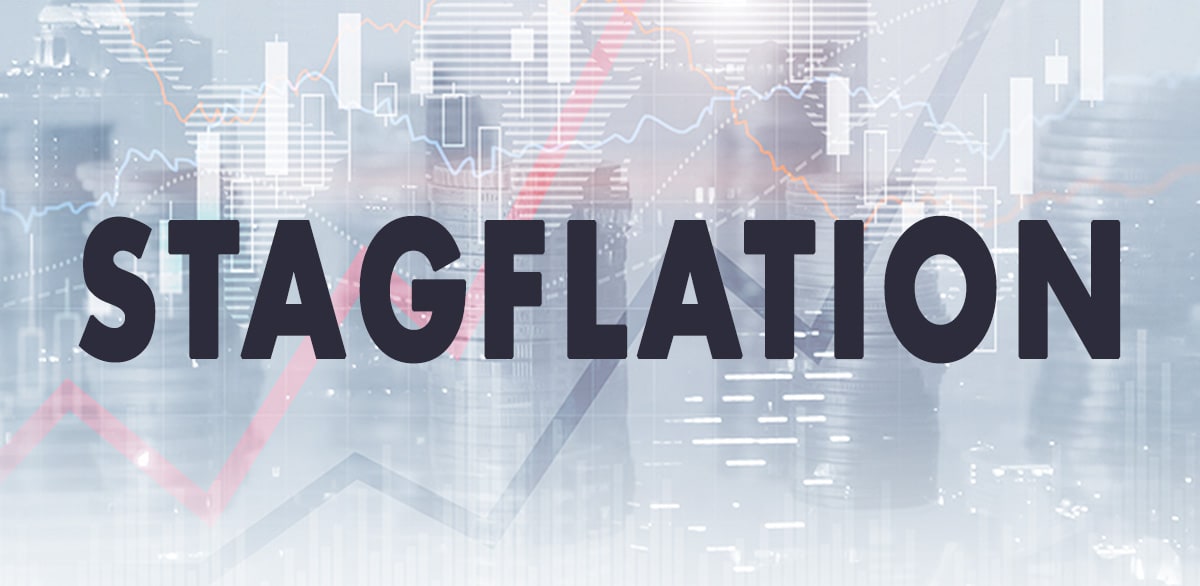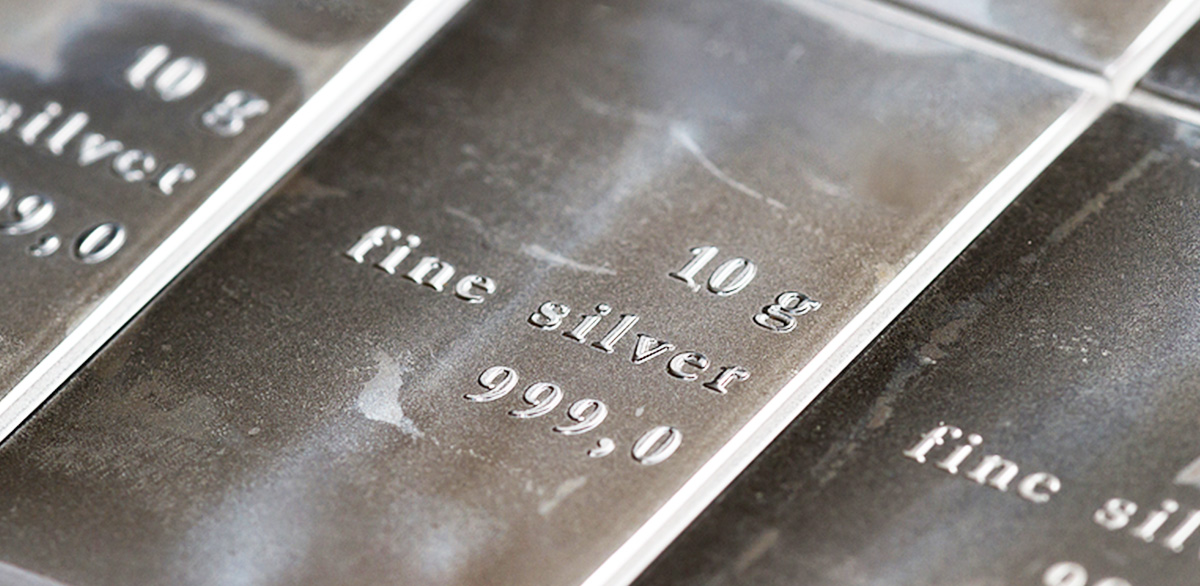
Are you wondering why the term stagflation is being thrown around so much at the moment? What does it mean in the context of our country’s economy? More importantly, what causes stagflation and how might it impact your financial wellbeing? Keep reading to learn more about what stagflation is and why it should not be ignored.
What is Stagflation?
Stagflation describes a stagnant economy combined with high inflation. When slow or stagnant economic growth combines with rising unemployment and inflation, conditions are ripe for a period of stagflation.
The most notable period of stagflation hit the United States and countries around the world when an oil crisis caused a recession leading to five straight quarters of negative GDP growth and a doubling of inflation. 1
The actual term “stagflation,” wasn’t actually coined here in the U.S., but by a British politician speaking to the UK House of Commons in the 1960s. [2] He was describing a worrisome period of economic turbulence in his country in which the sluggish economy and rising inflation made life hard for millions, many of whom were out of work and trying to survive as the value of currency was hit hard by inflation.
The most important thing to note about stagflation is the impact. Stagnant economies lead to unemployment. When you combine this with rising inflation the consequences can be dire, especially for those who have their savings and retirement funds wrapped up in the stock market and paper currency.
Stagflation vs. Deflation
Stagflation is often confused with deflation, but the two are actually very different. Deflation is actually the opposite of inflation, so instead of prices going up across the board, they go down. This typically happens when there’s a reduction in demand or an oversupply of goods.
Remember, inflation is a key ingredient of stagflation and the term deflation simply refers to reverse inflation, or prices falling instead of rising.
Stagflation vs. Inflation
While high inflation is a driving factor in creating stagflation, it doesn’t guarantee that stagflation will happen. If inflation is high while unemployment is low and the GDP is growing, stagflation is not happening. Likewise, if the economy is stagnant but inflation is low, this cannot be described as a period of stagflation. To enter a period of stagflation, there needs to be a combination of a stagnant economy and rising inflation.
Stagflation can also happen during periods of hyperinflation. Basically, hyperinflation defines rapid and uncontrollable inflation that skyrockets at a rate of 50% per month or more. While this is rare in developed economies, it has happened in Germany, Hungary, Russia, China, and Venezuela. Hyperinflation is devastating and has historically been caused when a country starts printing money to pay for its spending. [3]
A good way to look at it is through the lens of money supply. When there’s an oversupply of money, the price of goods will rise, causing inflation and in the worst case, hyperinflation. When governments simply print more money to increase spending, it puts an oversupply of money out into the world, which is why your dollars are worth less and less as time goes on. [4]
Learn more about Hyperinflation by watching this video:
Stagflation in the 1970s – What Happened?
When stagflation hit the U.S. in the 1970s, it wasn’t something economists had predicted or prepared for. In fact, the vast majority of experts believed that when unemployment rose and the economy slowed, inflation would trend downward. Essentially, the theory was that if inflation was high, a robust economy would balance things out and keep the country from spiraling into financial catastrophe. Or, if the economy was stagnant, inflation would slow so that the dollar would go further in lean economic times.
The 1970s turned those assumptions on their head. One factor was an oil crisis that not only drove up the cost of fuel in the United States, but reverberated across the board. Meanwhile, unemployment was rising. At the time, most economists subscribed to the theories of John Maynard Keynes, who believed that when an economy slowed, printing more money would cause prices to increase and unemployment to fall – creating a modest and predictable level of inflation.
Increasing the money supply modestly might have worked if not for one major development. In 1971, President Richard Nixon stopped allowing foreign governments to exchange their U.S. dollars for gold, essentially stripping away the dollar’s last remaining link to gold. [5] When the oil crisis struck in 1973, the world’s reserve currency (the U.S. dollar) was completely unanchored to gold and any increase in money supply served to drive up inflation at record levels that lasted through the 1980s.
Are we Headed Toward a New Era of Stagflation?
If the United States does enter another era of stagflation, it will be the first time since the 1970s. How likely is that to happen? According to former Chairman of the Federal Reserve Ben Bernake, the U.S. is headed for another painful period of stagflation if current conditions persist. [6]
Bernake, who served under two presidents from 2006 until 2014, says that signs point toward slowing growth and lingering inflation that will thrust the country into stagflation he believes will last for at least a couple of years.
Financial giant Goldman Sachs also sees tough times ahead for the U.S. economy. The company’s Chairman Lloyd Blankfein told CBS Face the Nation that people should be prepared for another recession, which could come as early as next year. [6]
The combination of a slowing job market and high inflation is indeed making another era of stagflation a real possibility for the United States.
Does Stagflation Cause Recession?
Stagflation doesn’t necessarily cause recession, but can be a stepping stone toward recession and make the impact much more painful financially. Recessions happen when the economy grows sluggish or stagnant and unemployment grows. When you add high inflation to this already volatile mix of conditions, goods become increasingly expensive during a time when fewer Americans can afford them. [7]
How to Protect Yourself From Stagflation
During periods of stagflation, assets tied to the paper dollar or stock market are in real danger. As inflation eats away at the value of the dollar, slow economic growth can lead to stock market turmoil and selloffs. That’s why more investors seek the safety of gold and silver.
What Happens to Gold in Stagflation?

Gold has been a clear winner in a stagflationary environment. Chart source: Schroders10
To get an idea of how gold might perform, it helps to look at the last period of stagflation that hit in the 1970s. During this time, gold increased eightfold as people sought to move their assets out of paper money and into gold and silver. As the gap between economic growth and inflation widens, it’s likely that the the price of gold and silver will skyrocket. [8]
What About Silver During Stagflation?

Many analysts believe silver will perform extremely well when stagflation hits the economy again. One indicator is how the metal performed from the mid 1970s until 1979, increasing to 15 times its value. Silver is expected to play a role in being a hedge against inflation.
Yet, there’s another indicator investors are keeping an eye on silver and that is growing demand. Silver is an important building component as green energy initiatives ramp up. As industrial demand grows in the coming years, silver will have another reason to gain momentum. [9]
Learn more about what other factors drive the price of silver by reading: “10 Factors that Influence Silver Prices”
Are You Prepared for Stagflation 2.0?
The alarm bells are sounding right now. Many of the country’s top financial minds are coming to the conclusion that another era of stagflation could be upon us soon. One of the best courses of action you can take may be diversifying your portfolio with physical gold and silver.
Speak with a precious metals advisor at Scottsdale Bullion & Coin to learn more about why silver and gold are among the best options when it comes to protecting your assets against the devastating impact of stagflation.
If you’re not ready to talk to someone just yet, request your FREE COPY of our popular Precious Metals Investment Guide to find out what makes gold the ultimate safe haven investment to protect you against stock market downturns, inflation, recession and stagflation.


